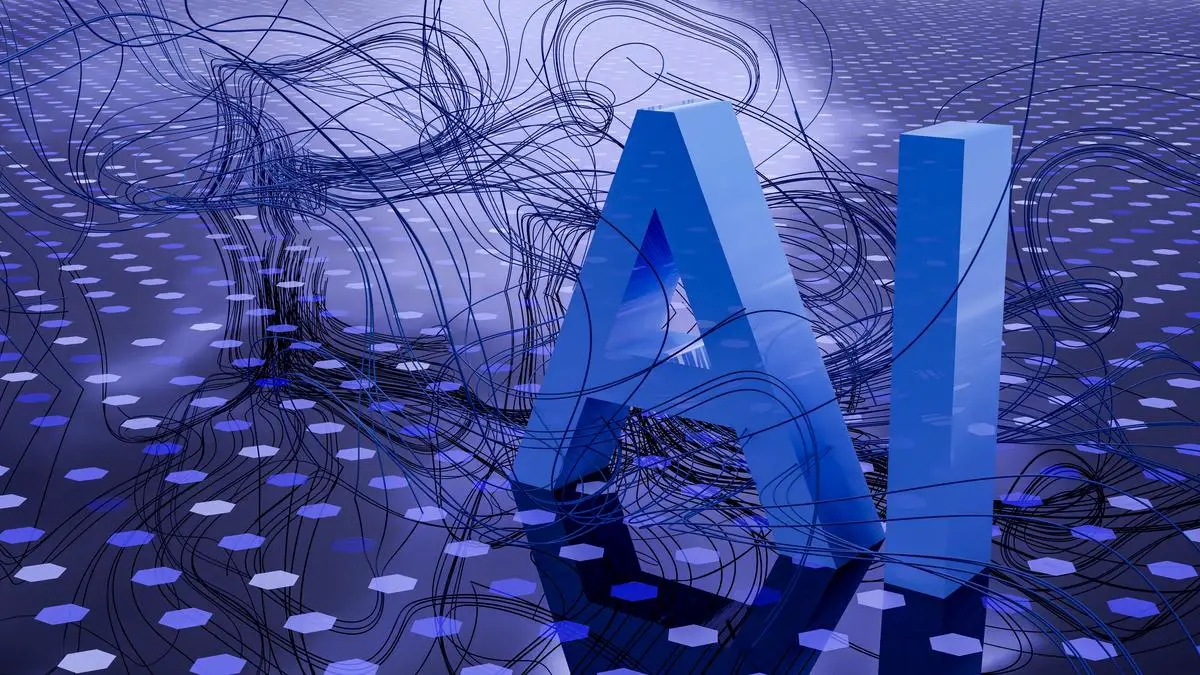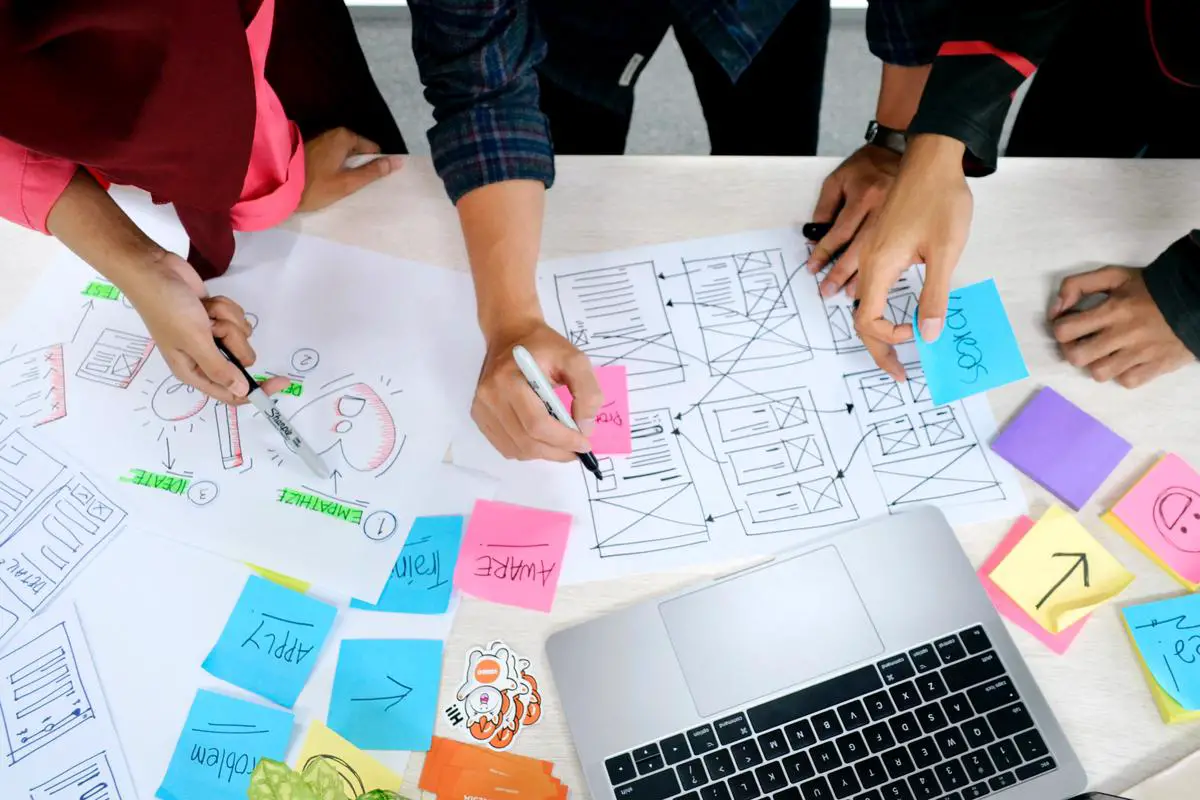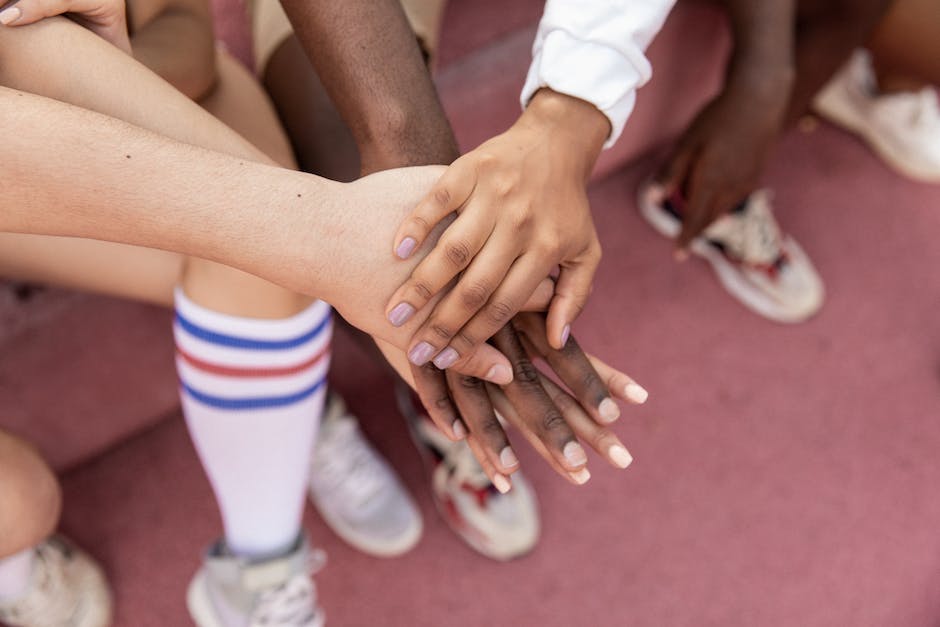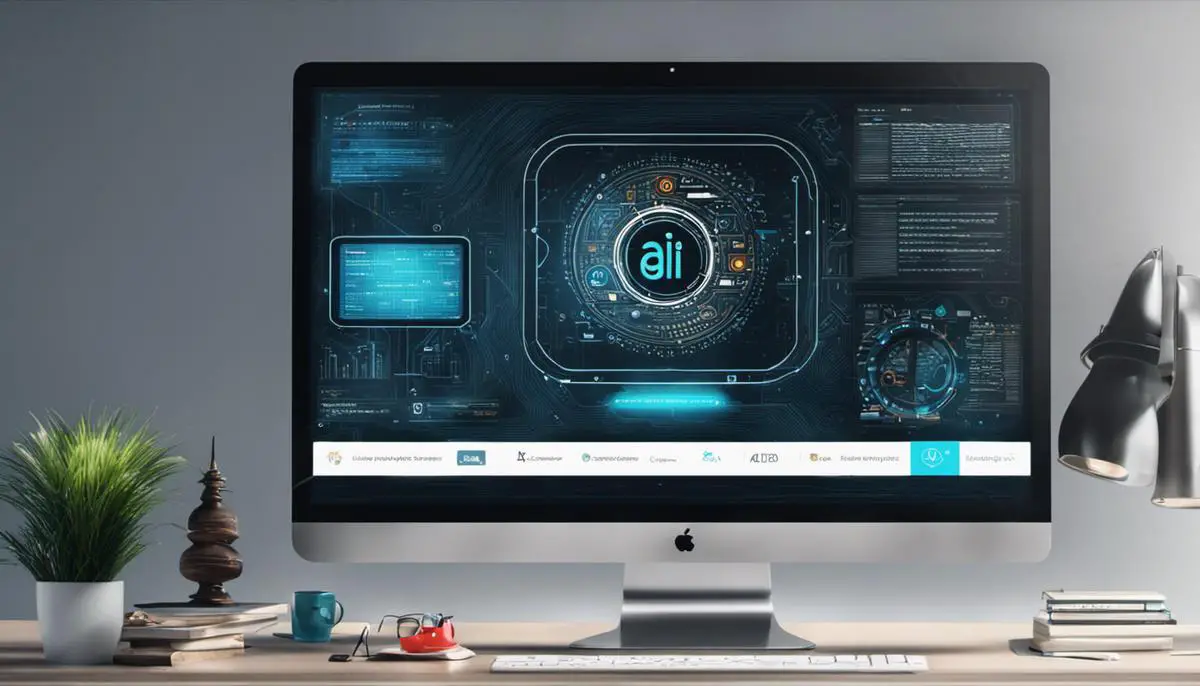The ubiquitous growth of Artificial Intelligence (AI) is redefining myriad industries, with web design standing next in line. Facilitating a fine blend of creativity and functionality, AI is revolutionizing the scene of website aesthetics. The digital landscape sees a paradigm shift as AI tools streamlines web design processes, personalizing user interfaces and experiences, and creating appealing websites catering to a diverse set of users. From enhanced functionality to insightful user-oriented designs, the integration of AI in web design has undeniably pushed the boundaries of what it can potentially achieve.
The role of AI in Web Design
As we delve into the twenty-first century, the rise of Artificial Intelligence (AI) has triggered a profound paradigm shift in various fields including web design aesthetics; crafting an innovative playground for designers, developers, and consumers alike. The influence of AI on web design establishes an interesting nexus between technology and aesthetics, heralding a new era in contemporary design philosophy.
At the heart of this transformation is the concept of algorithmic design. This uses AI to automate the creation of visual elements such as layouts, fonts and color schemes. AI ’s in-depth analysis and learning algorithms allow it to grasp and respond to user preferences thoroughly and, in turn, cater a more personalized web browsing experience. This heralds a significant shift from the conventional “one-size-fits-all” approach to a more individualized design ethos.
Furthermore, AI has made strides in context-conscious design. Here, the technology’s data manipulation capabilities and machine-learning algorithms allow it to infer and adapt web design aesthetics according to given contexts. It can identify relevant trends and patterns from vast amounts of data, detecting subtle nuances of end-user interactions and adjusting the design elements accordingly.
A compelling instance of this is the increasingly prevalent use of AI chatbots across various websites. Built to engage in natural language processing and machine learning, these chatbots are not only becoming more user-friendly in their interactions but are also adapting their visual elements to make the engagement more appealing and ideologically suited to the user, exemplifying AI’s role in contextually sensitive design.
Moreover, AI’s ability to generate designs based on emotional recognition technologies is another potentially groundbreaking influence on web aesthetics. By interpreting facial emotions through webcam feeds or user interaction trends, AI may construct web design elements that resonate with the user’s emotional state, thereby creating a more immersive and engaging user experience.
Consequent to these developments, nevertheless, the role of web designers is evolving. AI does not aim to fill the designer’s seat; rather, it seeks to act as a tool that enhances and optimizes a designer’s creative process. It helps design professionals by automating repetitive tasks, providing insights from large-scale data analysis, and potentially supplying unprecedented design options.
In conclusion, AI’s impact on web design aesthetics is multi-faceted and immense. It has automated content generation, made strides in context-aware and emotionally-intelligent design, and broadened the creative horizons of designers. AI is redefining the way aesthetics are perceived and implemented on the web, captivating and engaging users in novel ways and simultaneously stimulating fresh perspectives within the global design community. As with any technological advancement, however, the true measure of AI’s transformative power will only come with time.

Understanding AI Web Design Tools
Peering into the specific AI tools that have impactful effects on website aesthetics, it becomes evident that these innovations are not merely optional or luxurious additions. Rather, these tools are transfiguring the landscape of web design, making it more dynamic, responsive, and engaging.
One such tool hailing from this revolutionary force is Wix’s ADI (Artificial Design Intelligence) that magnifies the individualized design concept. Wix ADI formulates unique website designs by extrapolating information from data provided by the user, thus amplifying the credence in AI’s potential to tailor design according to the user’s specific desires.
Accompanying Wix ADI’s customization capabilities is another AI pioneer called The Grid. This AI tool lays its importance in context-conscious design, building websites based on defined goals, and content provided by users. Its artificial intelligence design assistant called ‘Molly’ aids in mastering the visual appearance for businesses in real-time.
Adobe Sensei also helms a prime position in this AI-led aesthetics impact. Its prominent role lies in its ability to automate the unexciting parts of web design. It takes care of tasks like cropping images perfectly, choosing the right color scheme, or mastering the fitting typography, thus leaving creators to focus more on their creative pursuits.
AI’s potential in emotional recognition is well encapsulated by tools like Pythia. Named after the oracle at Delphi, Pythia presents possibilities that earlier felt like figments of imagination. Its AI capabilities can glean the emotional tone of the content and generate a color scheme that resonates with the same, creating an emotional connection with the visitors.
The integration of AI with web design has also elevated user engagement through refined AI chatbots. Tools like Landbot deploy an interactive interface, eliminating the static form structure. They curate a story-driven, interactive experience for visitors, resulting in increased engagement and a more rewarding interaction.
In terms of AI’s transformative power, Firedrop is an example to reckon with. By gauging the user’s behavior, Firedrop’s AI capabilities identify the best conversion strategy, tailoring the design’s visual elements and navigation accordingly.
AI’s multifaceted impact also witnesses its prowess in enhanced data analysis for refining design decisions. Canva’s AI tool uses a vast data pool for color combination suggestions that aesthetically please the eye and evoke certain emotions.
As pivotal as these AI tools are, it’s imperative to understand that the role of the human designer is by no means diminished. Rather, like a master puppeteer, they are now commandeering the boundless potential of AI, propelling web design aesthetics into an era of seamless user experience and individualized beauty, one pixel at a time.

Case Studies of AI-enhanced Web Design
As the enthralling narrative of AI continues to unfurl, businesses find themselves amidst a digital renaissance, appropriated by the enterprising algorithms and intelligent systems. A particular area where the efficacies of AI have been markedly significant is the embellishment of website aesthetics.
When demystifying AI’s invaluable contributions to web aesthetics, it is imperative to graze upon one major factor that is the ‘personalization’ it caters to. Zooming past the epoch of traditional static web designs, AI-powered tools, such as Wix’s ADI, empowers businesses to create unique and eye-catching layouts, despite their technical know-how, hence democratizing the process while shedding the layers of complexity.
However, it would be unjust to restrict AI’s role as being purely operational. AI’s semantic resonance transcends to a more strategic venture too. For example, The Grid, by harnessing the power of ‘Molly’, its AI design assistant, interprets myriad user behaviors, thereby achieving a context-conscious design, distracting from the mediocrity of traditional website designs.
Progressive organizations have utilized the prowess of AI to expedite mundane tasks. Adobe Sensei, with its data-crunching capabilities and adeptness at pattern recognition, provides a reprieve from redundant chores, thus allowing businesses to focus more on core brand building and less on laborious tasks.
The dimensions of AI are not confined to analytical processes but have percolated to the emotional spectrum. Pythia’s unique approach employs emotional recognition, facilitating the generation of color schemes that resonate with users’ emotional states, hence consolidating a harmonious interface which improvises the user engagement.
Speaking of an engaging ecumenical environment, AI chatbots, such as Landbot, have become a staple tool in augmenting user experience. Its self-learning capabilities enable adroit handling of user inquiries, escalating the conversion rates, and solidifying brand reputation.
Unraveling another interesting perspective of AI, Firedrop integrates AI to identify the best conversion strategies, indicating a significant shift from a set template-designing approach towards a conversion-focused design perspective.
Adding the finishing touches to the vast canvas of AI-enabled web aesthetics is Canva’s AI tool. It revolutionizes color combinations based on quantified data, resulting in visually balanced designs that deliver the businesses’ message cogently.
While numerous AI tools are meticulously redefining the dynamics, the role of human designers remains paramount- shaping the unconventional, and harnessing the potential of AI in a manner that amplifies visual aesthetics and augments the human experience, not replace it.
No one can predict the future with absolute certainty, but the advent of AI in changing the business landscape, especially in opening new vistas in web design aesthetics, is palpably significant and filled with wide-ranging potential. It is indeed a thrilling narrative that will continue to evolve. The coupling of business and AI, symbiotic in nature, paints a promising picture of the future, a world where technology and human creativity harmoniously coalesce to deliver an unparalleled user experience.

The Future of AI in Web Design Aesthetics
As the borders of what is conceivable in web design aesthetics are persistently uplifted by the increasing sophistication of AI, it becomes crucial to delve into how these technologies could shape the future of web design. Particularly intriguing are the developments in the arena of ‘Generative AI’ and its application to web aesthetics.
Generative AI, a subset of AI, imbues machines with creative abilities. With the integration of this technology, a machine can now produce original content –be it an image, sound, design, or even narrative. In terms of web aesthetics, this could drastically shift the modus operandi of devising visual layouts and elements.
Consider the concept of ‘neural transfer’, an AI technique that allows style elements of one image to be applied to another, completely altering its aesthetics, yet maintaining the original content. The introduction of this technique has revolutionary implications for website aesthetics, giving rise to unique design amalgamations and fostering an eclectic web experience that challenges the status quo of web aesthetics. An informed prediction could be that, in the future, website aesthetics may no longer follow uniform trends, rather they could feature diverse, unprecedented, and intriguing designs, concocted by AI’s creative capacities.
Furthermore, with advances in Data-Driven Design (DDD), AI algorithms can scrutinize large volumes of data to pick up on subtle design-centric patterns that may elude human designers. Such capabilities, besides streamlining the design process, can equip designers with insights instrumental in orchestrating personalized visual narratives. Consequently, AI-driven DDD could reshape our idea of aesthetically pleasing web designs, steering it towards a more individualistic slant that values personal relevance over universal beauty standards.
Eye-tracking technology is another arena where AI involvement is taking leaps. This technology can track the movement of a user’s eye as they navigate a webpage, decoding their visual preferences, an invaluable asset in the creation of compelling, user-oriented designs. AI-infused with eye-tracking data could potentially revolutionize the web design process, offering an unprecedented depth of understanding into user’s choice, thereby enabling the creation of designs that are instantly appealing.
Lasth5, the advent of Virtual Reality (VR) and Augmented Reality (AR) technologies provides new frontiers for website aesthetics. Coupling these technologies with AI could engender web aesthetics that are immersive and interactive, creating elevated user experiences. With continual advancements, it seems reasonable to envisage a future where static web pages are replaced by intelligent, dynamic, virtually tangible spaces, hand crafted by AI regimes.
In the grand scheme of things, the utilization of AI in shaping future website aesthetics appears to be steering towards an individualized, user-centric approach, away from the domain of ‘typically appealing’. Web aesthetics could become an amalgam of generative AI, big data, user personalization, eye-tracking based insights, and immersive technologies, where each webpage is a unique expression, drafted in sync with the user’s persona.
While AI truly holds transformative potential, it is essential to remember that these current and future technologies are but tools in the hands of the human designer. It is the human touch, the innate creative flair, and the empathetic understanding of users’ needs and wants that will ultimately steer the direction of AI applications in web aesthetics.

As the curtain falls on the discussion about AI’s role in reshaping website aesthetics, we look ahead with great anticipation. The future of web design aesthetics, tinged with AI’s innovative strokes, paints a fascinating picture. AI is predicted to further personalize web interfaces, provide immersive user experiences, and significantly influence the way websites are designed and received. The roadmap paved with AI’s capabilities promises a superior digital landscape where aesthetics and usability coexist harmoniously, determined to provide every user with a seamless web experience.
